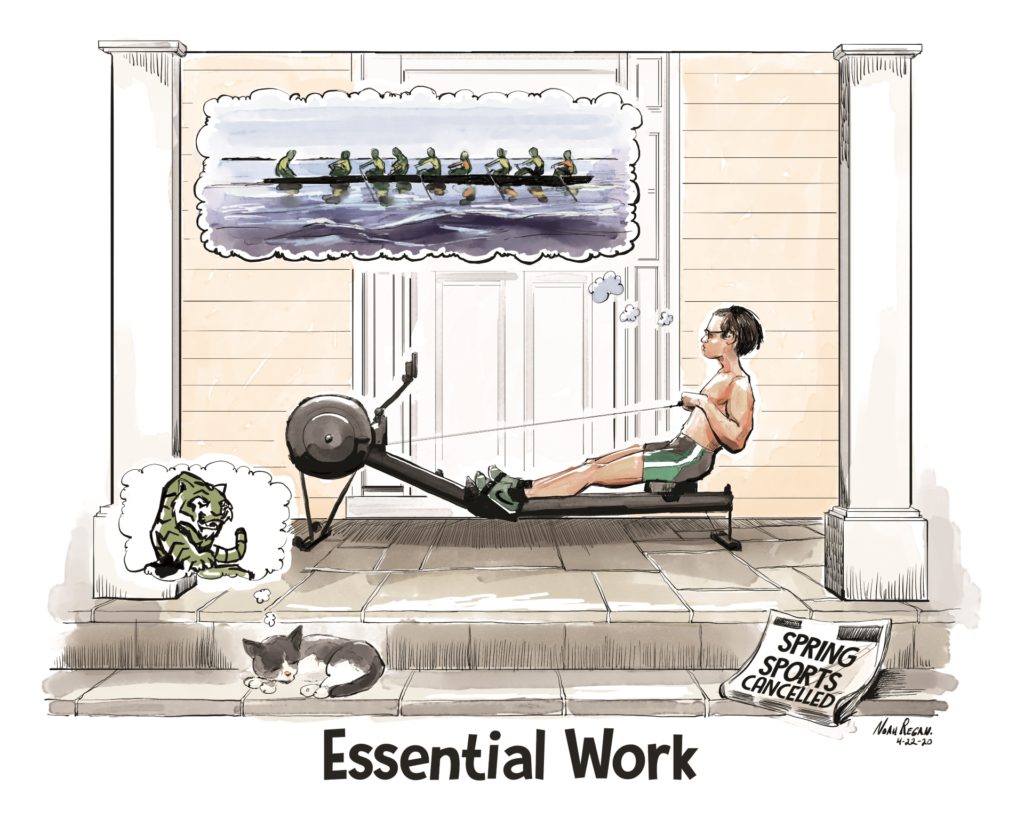While this graduation address was written for a specific set of students, I believe his points are especially relevant for credit unions. The times require risk-taking, but the human instinct is to hunker down. Excerpts follow.
Nurturing — and Celebrating — Next-Generation Innovators in Uncertain Times
(Jim Chung, the Associate Vice President for Research, Innovation & Entrepreneurship at George Washington University-May 5, 2020-excerpts)
The coronavirus pandemic has upended the educational and career prospects for the most senior members of Generation Z. Millions of college students are finishing the academic year through online classes, and soon-to-be graduates face the daunting challenge of finding a job in the midst of a global economy in turmoil. While the outlook is intimidating, the students most prepared and able to succeed in these uncertain times maybe those who have embraced entrepreneurship during their college careers.
Innovation and entrepreneurship training programs at the George Washington University (GW) and other institutions across the U.S. provide students with a methodology and mindset critical to operating in resource-constrained and challenging environments. These environments are often defined by high stakes problems with highly uncertain outcomes.
Problem Solving Approach
Our approach to solving problems through innovation is to treat it like a scientific experiment: Identify the problem, break it down into component parts that are solvable, test your hypotheses and assumptions, ask the right questions and understand the outcomes. Often, students run into inconvenient or unexpected answers that force them to change course entirely. If anything, the current pandemic encapsulates the type of environment we are working to prepare our student entrepreneurs for.
Virtual Competition
It’s against this backdrop that we decided to forge ahead with a virtual version of our GW New Venture Competition even as much of the university’s co- and extra-curricular activities have been canceled or postponed. Going virtual enabled us to still honor all the hard work and fascinating ideas of our student and faculty participants. But perhaps even more importantly, our decision to pivot amidst the sudden onset of COVID-19 has also served as an invaluable object lesson: Being forced to adapt quickly is something innovators must do.
This year, our competition venture winners and runners up sought to confront a diverse set of challenges, everything from a lack of innovation in the global supply of blood to nocturnal asthma attacks in children. They developed educational platforms to help adults with autism spectrum disorder achieve career and other goals and devised inspired ways of capturing and harnessing the kinetic energy produced by opening and closing doors. One of our runners up even devised an app that consolidates the tools needed for songwriting.
Innovation in Hardship
. . .history has shown that periods of economic downturn and hardship can ignite the most ingenious companies. Walt Disney started his company in 1929 at the start of the Great Depression, as well as aerospace pioneer United Technologies, now merged with Raytheon earlier this month. Closer to our times, WhatsApp, Instagram, and Uber all started during the Great Recession.
Yet, even before this pandemic and looming economic crisis, the U.S. has been losing ground in the global innovation race with the number of startups declining domestically and capital investments moving to entrepreneurs in other countries.
The All-Purpose Antidote
In order to promote innovation post-pandemic, universities will have to redouble their efforts to teach and encourage entrepreneurship among their students. Innovation training has value for everyone, not just students studying business or engineering. Those of us who lead innovation offices and programs have a responsibility to recruit students across disciplines, backgrounds, and life experiences.
. . .Indeed, many of challenges of the current pandemic and looming, complicated issues like climate change, the future of work and, yes, another global public health disaster, ensure that uncertainty and high stakes will be undeniable features for much of this generation’s — and successive generation’s — lives.
Our students need to be ready to think on their feet, to analyze, adapt and ultimately act with confidence. Spurring the next generation of entrepreneurs may be just the antidote we need.


